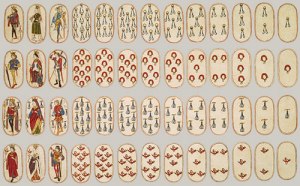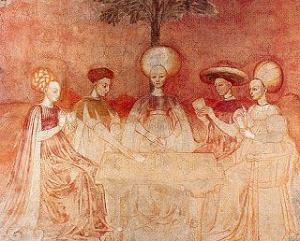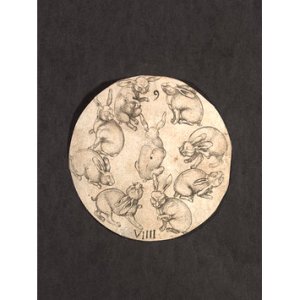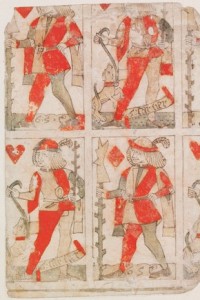Gaming and the Italian Salone
By Signora Giada Maddalena Alberti
A salon is a gathering of people under the roof of an
inspiring host, held partly to amuse one another and partly to refine taste and
increase the knowledge of the participants through conversation. These
gatherings often consciously followed Horace's definition of the aims of
poetry, "either to please or to educate" ("aut delectare aut
prodesse est"). The word salon is the French adaption of the Italian word
salone, from sala (a reception room found in the renaissance palazzo).
The salon was an Italian invention of the 1500s. In
cinquecento Italy,
scintillating circles formed in prominent smaller courts, often galvanized by
the presence of a beautiful and educated patroness such as Isabella d'Este or
Elisabetta Gonzaga. Italy
had an early tradition of the “salone”; the courtesan Tullia d'Aragona held a
salon in the 1500s, and Giovanna Dandolo became known as a patron and gatherer
of artists as wife of Pasqual Malipiero, the doge in Venice in from 1457 to 1462. These gatherings
proved to be the model for later salons in Italy
and the salon movement which flourished in France throughout the 1600s and
1700s.
Games Fit For a
Medici Princess
Isabella de’ Medici, the daughter of Cosimo de Medici, was a
beautiful, intellectual, and accomplished renaissance princess in Florence. Under the
protection of her father, Isabella was able to live a life of parties, loves,
and intellectual pursuits, while managing to delay her move to her husband's
home in Rome
for over a decade. She was the hostess of a glittering circle of her Florentine
contemporaries.
Beautiful and liberated, she not only matched the
intellectual accomplishments of her male cohorts, but sought amorous parity
also, engaging in an adulterous affair with her husband's cousin. It was this
affair - and her very success as First Lady of Florence - that led to her death
at the hands of her husband at the age of just thirty-four in 1576. She left
behind a remarkable story, and as her legacy a son who became the best of the
Orsini Dukes, immortalized by Shakespeare as Duke Orsino in "Twelfth
Night". It is documented that in her salone, conversations, refreshments,
and pastimes could be had for hours that bled into days.
Plausibly, games fashionable in Italy in the 1500s would have been
played in a salone like that of Isabella de Medici. Some of the more popular
games, some with Italian origins (*) are:
Sicilian Chess* - Board game, 1557 (CA#71 p7)
Blind Dice* - Dice game, 1500s (KWHb p145)
Italian Draughts* - Board game,1500s (Murray
4.3.3, Bell
p73)
Six-Men’s Morris Board game, obsolete by 1600 (Murray 3.3.20, Bell
p92)
Basset - Card game, 1400s (Parlett p8/53/58/ 64/ 77 and
CA#71 p15)
Cuckoo - Card game, 1400s (Parlett p31, CA#71 p18)
Games Italians Played
These instructions are taken largely from Master Damiano
Elie Bellini’s “Gaming Italian Style” class handout.
Grazie mille to him for allowing me to share his information
and sources.
Sicilian Chess
This version dates to 1557 and is a variant of medieval
chess very similar to the modern game.
In the Sicilian game the pieces, save the queen, move as in
modern chess. There is no castling move of the rook and king, and no two-square
opening pawn moves. A pawn reaching the opposite side of the board can be
promoted to the capital piece that started in the square the pawn reached. A
pawn reaching the king or queen’s square would be promoted to bishop. The queen
is restricted to move four squares diagonally or one square orthogonal.
Blind Dice
This is a 16th century Italian gambling game.
The game uses six cubed dice, each having a number from one
to six on one side with the other five sides blank. The total of all six dice
is twenty-one. The game is played by one player at a time taking on the house.
They player puts up a stake, then rolls the dice, and the
payoffs are as follows:
Number Rolled Payoff
0 Player
loses stake to the house
1 – 8 Player
keeps the stake
9 – 10 House
pays an amount equal to the stake
11 – 12 Pays
twice the stake
13 Pays
three times the stake
14 Pays
four times the stake
15 Pays
five times the stake
16 Pays
ten times the stake
17 Pays
fifteen times the stake
18 Pays
twenty times the stake
19 Pays
twenty-five times the stake
20 Pays
fifty times the stake
21 Pays
ninety times the stake
Italian Draughts
Draughts was played in France,
England,
and the Spanish Marches before 1500. The first mention of this checker-like
game being played in Italy
dates from 1527. Elsewhere in Europe it was played later than 1550, which
confirms an eastward spread from France.
In the Italian version the board (8x8) is placed so that the
double black corner is on the player’s left instead of right. Each player has
twelve pieces set up on the black squares of the first three rows in front of
him.
The pieces move only on the black squares and black has the
first move. The pieces move diagonally forwards one square at a time and may
not move backwards.
The object of the game is to capture or immobilize your
opponent’s twelve pieces. A capture is made by a piece (man) jumping over an
enemy piece and landing on a vacant square immediately beyond. If the capturing
piece can continue to leap over the other enemy pieces they are also captured
and removed from the board. When a piece finally comes to rest the move is finished.
If an uncrowned piece reaches the opponents back line it
becomes a king. Crowning ends a move. After crowning a king can move diagonally
backwards and forwards one square at a time, and captures by a standard jump.
There may be several kings on the board at a time.
In Italian Draughts, a number of rules apply to captures:
A player had to take when possible or lose the game.
A man (piece) could not take a king
If he had a choice of capture he was forced to take the
greater number; if this number were equal (each option containing a king) when
there are two or more options, then he must capture wherever the king occurs
first. This rule was known in Italy
as ‘il piu col piu’ (‘the greater to the greater’).
Six-Men’s Morris
Morris, also known as Mill, Mills, and Merrills, was popular
in Italy, France, and England during the middle ages but
was obsolete by 1600.
Each player has six pieces and they are entered (placed)
alternately, one at a time; each player trying to form a row along one of the
sides of either square. If a player succeeds in this he is allowed to remove
any one of his opponent’s pieces. When all of the pieces have been played the
game continues by alternate moves of a piece along a line to an adjacent empty
point. When a player is reduced to two men, the game is over.
In Shakespeare's 16th century work A Midsummer Night's
Dream, Titania laments that it is no longer played: "The nine men's morris
is filled up with mud" (A Midsummer Night's Dream, Act II, Scene I).
Basset
From the Italian bassetta, a card game also known as
barbacole, considered one of the most polite pastimes. It was intended for
persons of the highest rank because of the great losses or gains that might be
accrued by the players. This game financially endangered some of the great
French houses and was banned by the King of France.
Basset is a banking game, with a significant advantage for
the house. It is purely a game of chance. One player is the banker.
The banker has a full deck of cards, well shuffled. Each
punter, or player, has the 13 cards of a single suit of a similar deck in front
of him, or perhaps a board with marks for the 13 denominations. Punters put
bets on their boards before play begins. Once all bets are placed, the banker
turns up a single card from his deck (made up of multiple decks of cards**) and
wins all bets placed on the denomination shown (suit is ignored). After the
first card is turned up the banker turns up cards from his deck in pairs,
putting them on two piles alternately, until all bets are resolved or the deck
is exhausted. Denominations that match a card turned up on the first pile lose
their bets to the banker; denominations that match a card turned up on the
second pile win. The banker must pay equal to any winning bets. As with the
first card turned up, the banker wins any bets that remain on the last card
turned.
On any winning bet the punter may decline his winnings and
let the bet ride in the hope of further winnings.
If the same denomination shows up again on the winning pile,
the banker must pay seven times the bet; if the bet is let ride again and wins,
the banker pays 15 times; if it is let ride and shows up a fourth time on the winning
pile the banker must pay 30 times the bet. Finally, if it shows up four times
in one deal, the punter lets it ride into the next hand, and the same card
shows up winners a fifth time, the banker must pay 60 times the bet. The
decision to let a bet ride is marked by bending up a corner of the card it lies
on each time (this is destructive of cards, so it is suggested that you use
some other way to mark a riding bet).
Once a payment is declined by a punter (leaving a bet to
ride) the punter cannot change his mind until the card shows up again on the
winning pile, when he again has the choice of taking his winnings or letting it
ride.
** One deck of cards is sufficient for 2 to 3 players, each
additional deck allows up to four more players.
Cuckoo
Also known as ranter-go-round, gnav, killekort, chase the
ace, and hexencarteis. Cuckoo was first mentioned in Cornwall in the early fifteenth century. By
the end of that century it had spread throughout Europe and become a favorite
in Scandinavia. From there is spread to the
Baltics, Russia, and
northern Germany.
It is, allegedly, the oldest card game for which directions were printed in the
Russian language. It was also quite popular in southern Italy and the
western Mediterranean islands.
It is a game for any number of players. Cards rank king=high
to ace=low without regard to suit. A stake is determined at the start. The
players are all dealt one card each. After the deal, each player, starting from
the dealers left, may stand or demand to swap cards with the player to his
left. A player may only refuse to swap if he is holding a king, which must then
be shown. This continues until it returns to the dealer, who may replace his
card with one drawn at random from the pack, if he wishes.
The cards are then revealed and the player holding the
lowest ranked card must then pay the predetermined stake to the pot. If two or
more players tie for the lowest rank, they must each contribute to the pot.
After a player has lost a predetermined number of hands, usually three, he is
out of the game. Play continues until there is only one player left in, who
then wins the pot.
References:
Bell,
R.C. Board and Table Games from Many Civilizations, Vols. 1 & 2. Dover Publications.
Complete Anachronist #4. Indoor Games, or How to While Away
a Siege. SCA, Inc.
Known World Handbook (Third Edition). SCA, Inc.
Murray,
H.J.R. A History of Board-Games Other Than Chess. Hacker Art Books, Inc.
Partlett, David. A History of Card Games. Oxford University
Press.












